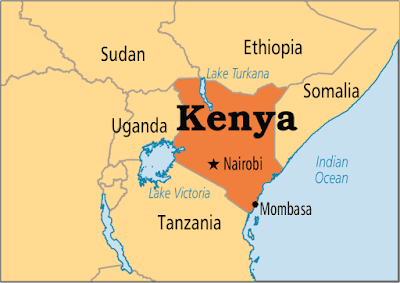Kenya lifestyle quality based on shelter
A new report from Habitat for
Humanity’s (www.Habitat.org) Terwilliger Center for Innovation in Shelter shows
that low-income people in Kenya who obtain innovative microfinance loans to
improve their housing also experience a significant increase in their quality
of life.
The report is an impact
evaluation study of the Building Assets, Unlocking Access
(https://bit.ly/2qmfPml) project, a partnership between Habitat for Humanity’s
Terwilliger Center for Innovation in Shelter and the Mastercard Foundation. The
project helped financial institutions to develop effective housing microfinance
products and services.
“We know there are strong
connections between safe, decent housing and a family’s health and financial
stability,” said Patrick Kelley, Vice President of Habitat for Humanity’s
Terwilliger Center for Innovation in Shelter. “Through these microfinance
products, individuals earning as little as US$50 per month, a population that
is typically excluded from banking and financial services, can access
affordable loans that will help improve their living conditions and build,
extend, or renovate their homes.”
In Kenya, Habitat’s Terwilliger
Center worked with Kenya Women Microfinance Bank (KWFT) to develop the housing
microfinance product Nyumba Smart Loan. The report, which surveyed 1,250 women
clients of KWFT over a one-year period, showed that low-income women who
accessed the loan increased their overall housing satisfaction by almost 15
percent.
Findings from the study showed
that clients who accessed the Nyumba Smart Loan were able to invest in water
and sanitation improvements such as flushing toilets and the installation of
safe water sources. Households reported as being mostly happy with the quality
of their walls and roofs, the number of rooms in their houses, and the quality
of building materials used to construct the houses.
“This impact study demonstrates
that the benefits of convenient and affordable housing microfinance can be
far-reaching for people living in poverty,” said Ruth Dueck-Mbeba, Senior
Program Manager at the Mastercard Foundation. “Having a bank account and the
services it offers is a doorway not just to better housing but to a greater
sense of well-being for individuals and for communities.”
Access to adequate housing for
low-income earners is a critical development issue facing many countries around
the globe. Kenya, where housing is recognized in the constitution as a basic
human right, is no exception. Approximately 61 percent of Kenyans live in
temporary shelter or extremely low-quality housing, affecting the overall
well-being of households.
Over the past few years, the
microfinance sector has grown in Kenya to address challenges such as the lack
of access to decent housing and formal financial services for low-income
people. Housing microfinance consists of small, non-mortgage backed loans
starting at just a few hundred dollars that can be offered to low-income
populations in support of incremental building practices.
Through the Building Assets,
Unlocking Access project, Habitat’s Terwilliger Center provided technical
assistance to six leading financial institutions in Uganda and Kenya to develop
housing microfinance products and services. To date, this project has seen more
than 69,000 loans disbursed and US$60 million has been mobilized for developing
incremental housing finance in these two countries.
As part of the project, housing
microfinance loans were offered not only to informal workers with unsteady
incomes, but also to low-income salaried workers making between US$5-10 per
day.
Habitat for Humanity believes
that housing microfinance can and should become a mainstream offering for
financial institutions in Sub-Saharan Africa as they respond to growing housing
needs in the region, particularly from people with low income. The business
case for developing and scaling housing microfinance has been proven through
the work of financial institutions in Kenya and Uganda. The organization firmly
believes that this model can be adopted in other parts of Sub-Saharan Africa.




Comments
Post a Comment